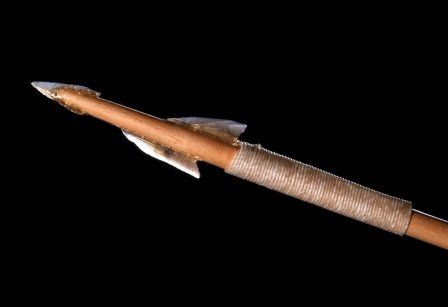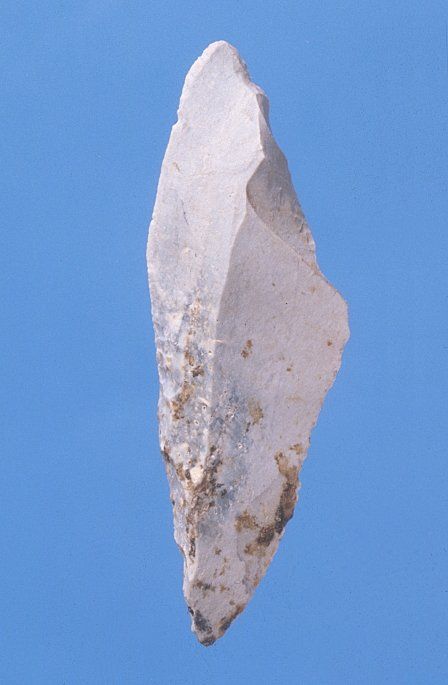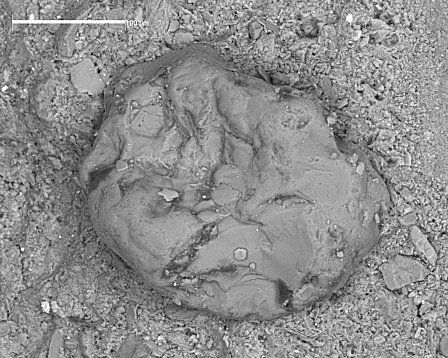Ancient relic gives up its sticky secrets

Arrowhead showing hafted rows of stone barbs, known as microliths. Microlith-tipped arrowheads were used in Wales between 9000-4000BC.

Microlith (less than 40mm, 1.6 inches, long) found at Burry Holms. The patches of tar can be seen at the base of the image.

One of the spots of birch bark tar, seen under a scanning electron microscope. The tar appears to have been heated at some point, giving it a glassy appearance.
When tiny spots on the surface of an 11,000-year-old piece of stone from South Wales were examined under powerful microscopes, they turned out to be evidence of the first use of glue ever discovered in Wales.
The hunter-gathers of Wales
During the Middle Stone Age or Mesolithic (9200-4000BC), harpoons and spears were commonly used by the early peoples of Wales. These hunter-gatherers used these tools to hunt deer and to spear fish, the two being the main food sources at this time.
The harpoons and spears were made of wood, bone or antler, with stone barbs, known as 'microliths', set in rows down their sides. Over thousands of years, the wood and bone decayed leaving only the stone microliths to be found and studied by archaeologists.
Hundreds of these microliths have been found in Wales, but how they were attached to the wood, bone or antler sticks remained a mystery.
That is, until excavations at Burry Holms on the Gower (a peninsula in south Wales) uncovered a microlith that had curious spots on its surface.
Powerful microscopes
This microlith was studied under the powerful magnification of a scanning electron microscope, allowing extremely fine detail of the surface spots to be examined.
What was discovered was the remains of a tar like substance. This was more than likely to be birch bark tar, a sticky resin that was once used as a glue. This discovery suggests that the stone microliths would have been originally attached to the spears or harpoons using the sticky tar as a glue.
Although the use of birch bark tar has been found across Europe, this is the first time it has ever been discovered in Wales.
This modern day scientific analysis of an object 11,000 years old shows how the ancient technology of our ancestors can by uncovered through the use of modern science.
Background Reading
'Identification of hafting traces and residues by scanning electron microscopy and energy-dispersive analysis of x-rays' by A. F. Pawlik. In Lithics in action by E. A. Walker, F. Wenban-Smith and F. Healy. Published by Oxbow books (2004).
'Burry Holms (SS40019247)' by E. A. Walker. In Archaeology in Wales, vol. 40, p88-89 (2000).
'Burry Holms (SS40019247)' by E. A. Walker. In Archaeology in Wales, vol. 41, p126 (2001).